Bad credit can make you feel like you’re locked out of everything apartments, credit cards, even basic financing. When the system says no, subprime personal loans say maybe.
But be careful: Approval isn’t the finish line, it’s the starting point.
Subprime lenders don’t offer charity. They offer risk at a price. Higher rates, stricter rules, and bigger consequences if you fall behind.
In this guide, you’ll learn exactly how subprime personal loans work, where to find the best lenders, what traps to avoid, and how to borrow smarter without putting your future on the line.
Because getting approved is just step one. Staying in control is the real win.
Key Takeaways
Subprime Personal Loans: What To Expect
- Subprime personal loans are designed for borrowers with credit scores below 620.
- Expect higher interest rates, smaller loan amounts, and stricter income verification.
- Getting pre-approved can help you compare offers and avoid predatory lenders.
- Top lenders for subprime credit include LendingPoint, OneMain Financial, Avant, and Upgrade.
- Risks include high APRs, prepayment penalties, and aggressive collection practices.
- Improving your credit score even slightly can lead to better loan terms.
- Alternatives like credit builder loans and peer-to-peer lending may offer safer options.
Disclaimer: This site contains affiliate links. If you make a purchase, we may earn a commission at no extra cost to you.
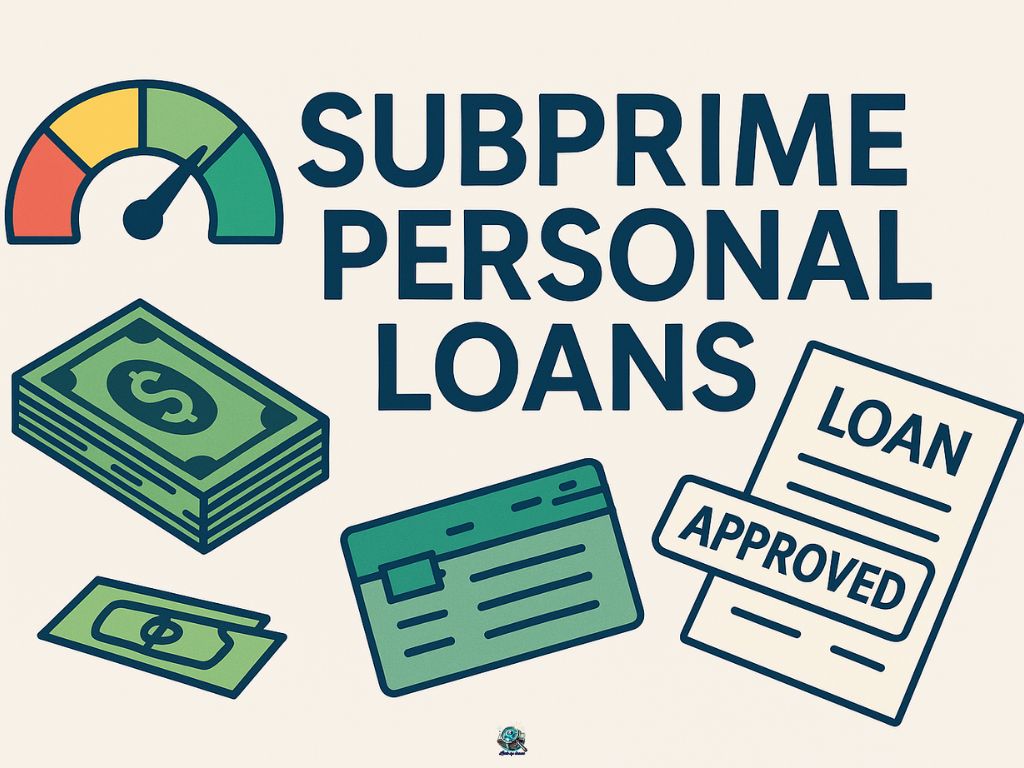
What Are Subprime Personal Loans?
Subprime personal loans are loans designed for borrowers with bad credit usually a credit score below 620.
When banks and prime lenders turn you down, subprime lenders step in, offering financing at a cost.
Here’s what sets subprime personal loans apart:
- Higher Interest Rates: Because lenders see you as a higher risk, they charge more to protect themselves. It’s not unusual to see APRs ranging from 20% to 36% sometimes even higher.
- Stricter Loan Terms: Subprime loans often come with shorter repayment periods, higher monthly payments, and stricter income requirements.
- Lower Loan Amounts: Lenders may cap how much you can borrow typically offering smaller loans to minimize their risk.
Subprime personal loans can be unsecured (based on your credit and income) or secured (backed by collateral like a car or savings account).
Bottom line: Subprime personal loans make borrowing possible when your credit history says no but they make you pay heavily for the opportunity.
According to Experian’s 2025 Credit Market Trends Report, personal-loan balances among subprime borrowers rose 12% year over year as more Americans with credit scores below 620 sought unsecured financing options.

🆚 Comparison of Prime vs Subprime Loans
| Feature | Prime Personal Loans | Subprime Personal Loans |
|---|---|---|
| Credit Score Range | Typically 670 and above | Below 620 |
| Typical APR | 6% – 20% | 20% – 36%+ |
| Loan Amounts | $5,000 – $50,000+ | $1,000 – $10,000 |
| Repayment Terms | 24 – 84 months | 12 – 36 months |
| Approval Odds | High (good credit profile) | Moderate to low; stricter checks |
| Risk Level | Low (predictable, affordable) | High (expensive, stricter terms) |
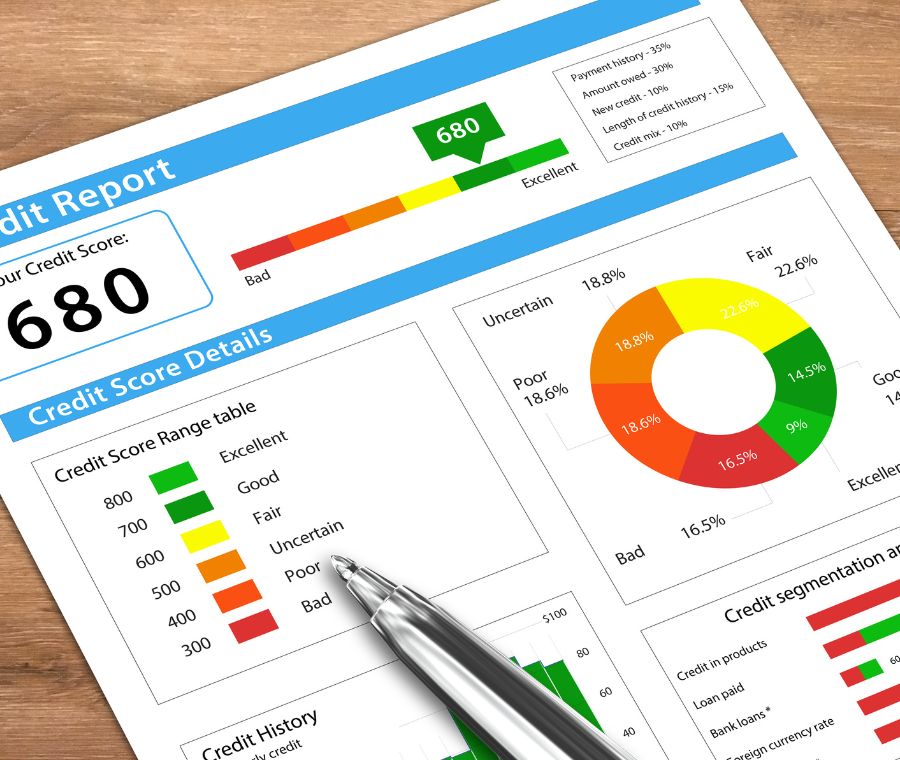
How Subprime Personal Loans Work
Subprime personal loans follow the same basic pattern as traditional loans: You borrow a lump sum, repay it over time with interest, and (hopefully) rebuild your credit along the way.
But when you’re a subprime borrower, the game changes and not in your favor.
Here’s how it usually works:
- You’ll Pay More: Higher risk means higher interest rates. While prime borrowers might snag a loan at 8% APR, subprime borrowers often face 20%, 30%, or even 36%.
- You’ll Prove More: Subprime lenders dig deeper into your income, employment history, and sometimes even your bank account activity. They want to know you can survive the payments.
- You’ll Get Less: Loan amounts are often lower sometimes capped at $1,000 to $5,000 because lenders want to limit how much they risk.
- You’ll Pay Faster: Repayment terms are usually shorter often 12 to 36 months which means higher monthly payments compared to a typical long-term personal loan.
Some subprime loans are secured by collateral. Others are unsecured but if you miss payments, expect aggressive collections and fast credit score damage.
Bottom line: Subprime personal loans can work for you or against you depending entirely on how you manage them.
Data from the Consumer Financial Protection Bureau (CFPB) shows that borrowers with subprime personal loans are nearly five times more likely to fall 60 days behind on payments within the first year compared to prime borrowers underscoring the importance of understanding repayment terms before signing.
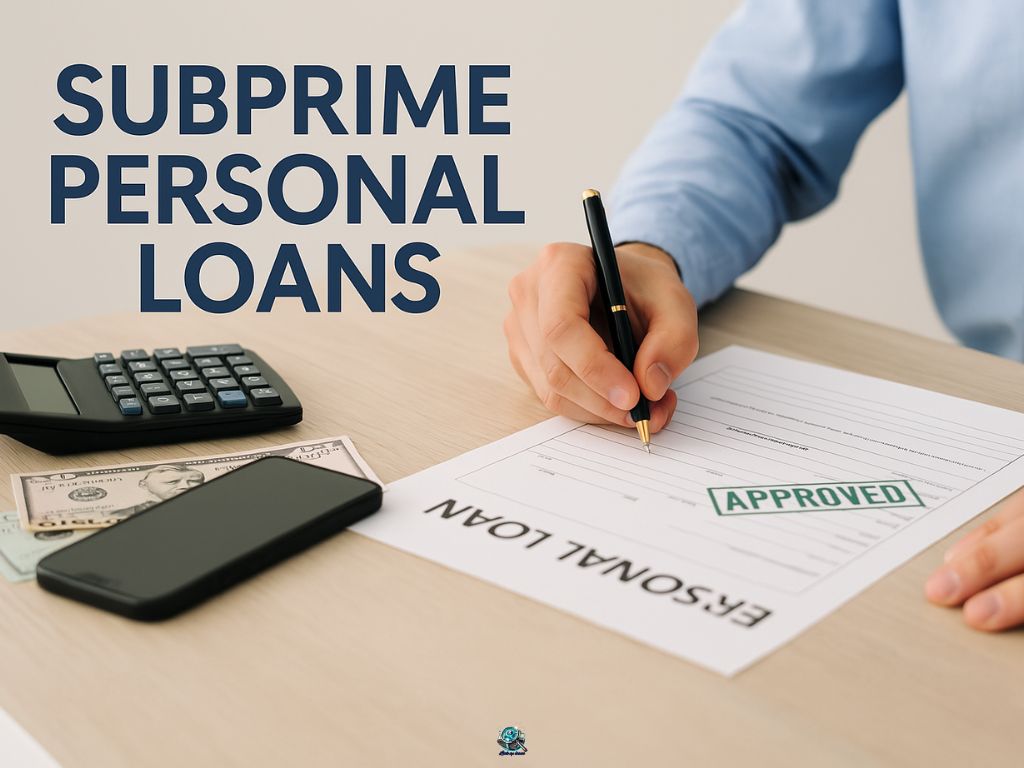
Best Subprime Personal Loan Lenders (2025)
Finding a subprime personal loan is one thing. Finding a subprime lender that won’t bleed you dry is another.
Here are some lenders known for working with borrowers who have less-than-perfect credit:
- LendingPoint: Specializes in personal loans for fair and poor credit. Offers loans from $2,000 to $36,500 with APRs ranging from 9.99% to 35.99%. Fast funding sometimes as quick as the next business day.
- OneMain Financial: Known for working directly with subprime borrowers, even those with very low credit scores. Loans start as low as $1,500 and often require a meeting at a physical branch.
- Avant: Targets borrowers with credit scores as low as 580. Offers unsecured loans between $2,000 and $35,000. Watch for higher APRs and origination fees.
- Upgrade: Offers flexible personal loans for credit scores as low as 580. Features free credit monitoring and a strong mobile app to help borrowers stay on track.
- Local Credit Unions and Online Lenders: Some smaller credit unions or niche online lenders are surprisingly flexible with subprime borrowers. Always compare offers locally before committing to a big national name.
Tip: Even if you find a lender that says “bad credit OK,” always read the fine print and never borrow more than you absolutely need.
Before choosing a lender, remember: CFPB data indicates that APRs for subprime personal loans averaged 27 – 31% in early 2025, depending on credit tier and lender type.
🔝 Top Subprime Personal Loan Lenders At a Glance
| Lender | Loan Amounts | APR Range | Key Features |
|---|---|---|---|
| LendingPoint | $2,000 – $36,500 | 9.99% – 35.99% | Fast funding (next day), fair/poor credit focus |
| OneMain Financial | $1,500 – $20,000 | 18% – 35.99% | In-person branches, flexible for low scores |
| Avant | $2,000 – $35,000 | 9.95% – 35.99% | Scores as low as 580, quick online process |
| Upgrade | $1,000 – $50,000 | 6.5% – 35.99% | Free credit monitoring, mobile app |
| Local Credit Unions | $500 – $15,000 | 6% – 28% | Lower fees, member-friendly terms |
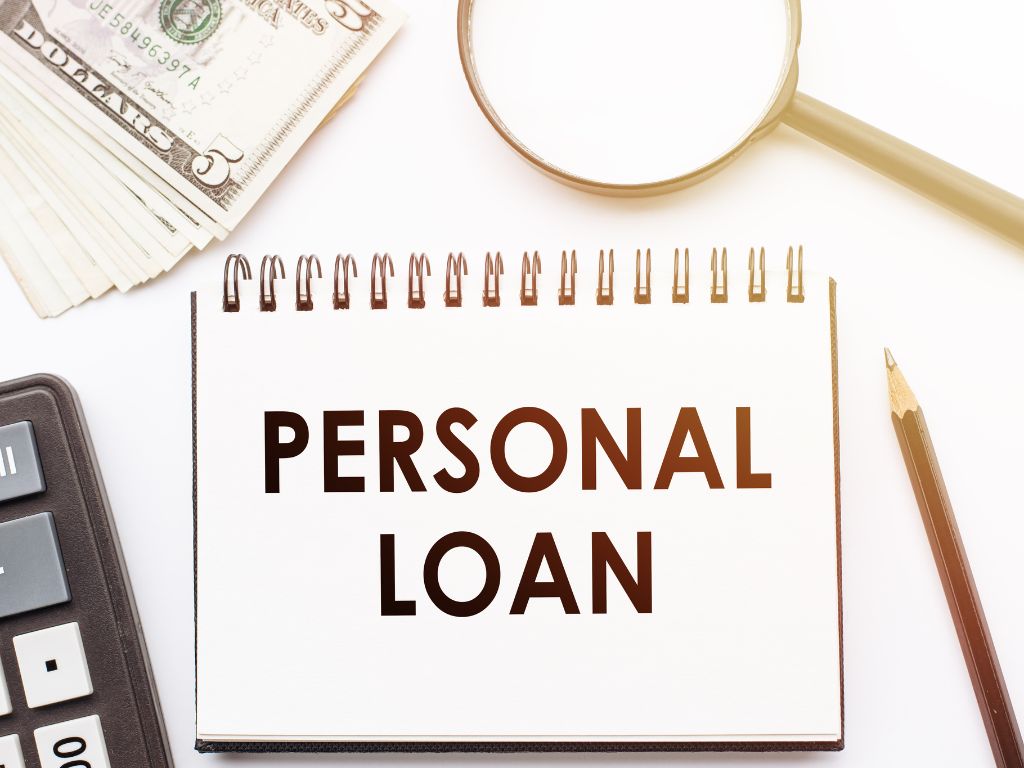
What to Expect When You Have Subprime Credit
When you’re borrowing with subprime credit, it’s better to know the rules before you play the game.
Here’s what you can realistically expect:
- Smaller Loan Amounts: Most subprime personal loans fall between $1,000 and $10,000. Lenders want to minimize their risk, so don’t expect huge payouts unless you have strong income or collateral.
- Higher APRs: Subprime borrowers usually see APRs ranging from 20% to 36%. Even a “good” offer for bad credit often comes with double-digit interest.
- Proof of Income: Lenders may require pay stubs, tax returns, bank statements, or even employer contact information. They want to know you can actually handle the monthly payments.
- Shorter Loan Terms: Repayment periods are often between 12 and 36 months. That means higher monthly payments compared to traditional long-term loans.
- Higher Fees: Some lenders charge origination fees (1%–10% of the loan amount) or prepayment penalties if you pay off the loan early.
Bottom line: With subprime credit, you can get a personal loan but it’ll cost more, and you’ll need to prove you can handle the responsibility.
📊 Quick Fact: The Real Cost of Subprime Borrowing (2025)
- The average APR for subprime personal loans in early 2025 is 27.8%, compared to 11.5% for prime borrowers.
- 36% APR is the informal ceiling most consumer protection agencies consider “high-risk.”
- According to CFPB and Experian, nearly 1 in 5 subprime borrowers refinance their loans within 18 months, often paying more in the long run.
💡 Takeaway: A few points of credit improvement can make a double-digit difference in your interest rate waiting 60–90 days to rebuild your score could save you thousands.
Those numbers highlight why timing and preparation matter. Before you apply, understand exactly what you’re agreeing to; the risks aren’t theoretical.
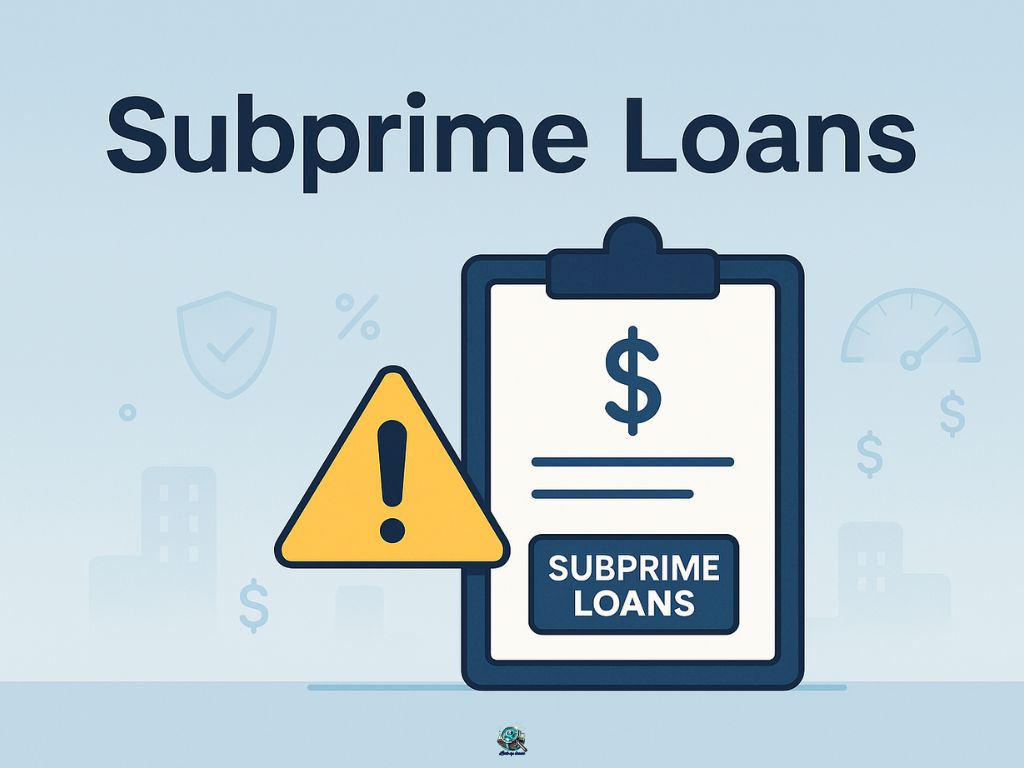
The Hidden Risks of Subprime Personal Loans
Subprime personal loans can feel like a lifeline when you have bad credit but if you’re not careful, they can pull you deeper into debt instead of pulling you out.
Here’s what you need to watch for:
- Sky-High Interest Rates: Rates of 20% to 36% (or higher) mean you could end up paying back double what you originally borrowed if you stretch payments over time.
- Aggressive Collection Tactics: Miss a payment or two, and some subprime lenders won’t hesitate to call, email, or even take legal action fast.
- Prepayment Penalties: Some lenders charge fees if you try to pay off your loan early locking you into high interest payments longer than you want.
- Debt Traps: It’s easy to roll one bad loan into another, especially if lenders offer “refinancing” without solving the underlying problem leading to an endless debt cycle.
- Credit Score Damage: A missed payment can sink your already fragile credit score even deeper, making it harder (and more expensive) to borrow in the future.
Bottom line: Subprime personal loans can help but only if you stay in control of the terms, the payments, and the total cost.
🚩 Red Flags of Subprime Personal Loans
| Red Flag | What It Means | Why It’s Risky |
|---|---|---|
| APR Above 36% | Lender charges extreme rates | Debt can double the original loan amount |
| Prepayment Penalties | Fees for paying off early | Locks you into high interest payments |
| Aggressive Collection Tactics | Harsh calls, threats, legal action | Stressful and damaging if you fall behind |
| “No Credit Check” Offers | Lender avoids checking your credit | Usually a sign of predatory lending |
| Mandatory Add-On Products | Insurance or fees added to loan | Increases cost without real benefit |

⚖️ Pros & Cons of Subprime Personal Loans
| Pros | Cons |
|---|---|
| Accessible to borrowers with poor or limited credit history | High interest rates (20% – 36%+) |
| Fast approval and funding in many cases | Smaller loan amounts ($1,000 – $10,000) |
| Can help rebuild credit with on-time payments | Shorter repayment terms (12 – 36 months) |
| Available through online lenders, credit unions, and finance companies | Risk of aggressive collection tactics if payments are missed |
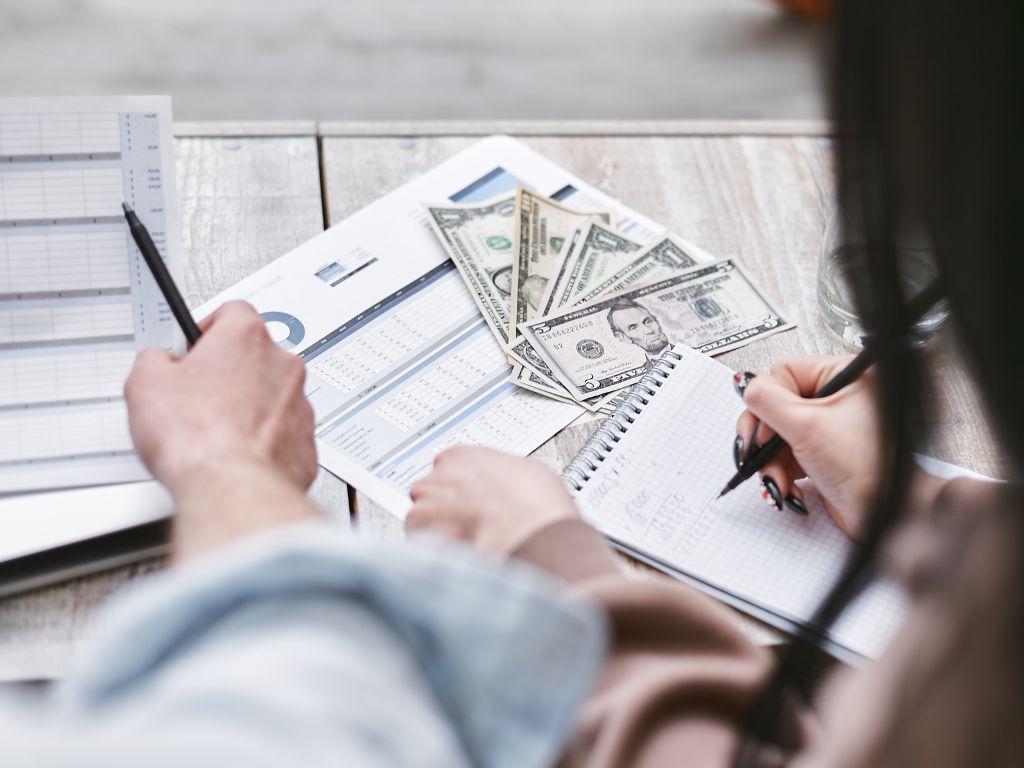
Tips to Get a Better Deal on a Subprime Personal Loan
Bad credit doesn’t mean you have to accept a bad loan. You have more leverage than you think if you know how to use it.
Here’s how to secure a better deal, even with subprime credit:
- Improve Your Credit Even a Little: Paying off a small debt, fixing an error on your credit report, or lowering your credit utilization can bump your score up just enough to qualify for better terms.
- Apply With a Co-Signer: A co-signer with good credit can dramatically lower your interest rate and boost your chances of approval. Just make sure both of you understand the responsibility if you miss payments, your co-signer’s credit gets hurt too.
- Shop Around Aggressively: Don’t jump at the first offer. Compare multiple lenders banks, credit unions, and online platforms and pit offers against each other to get the best deal.
- Negotiate Terms Not Just Rates: It’s not just about getting a lower APR. Ask about origination fees, prepayment penalties, and flexible repayment options.
- Borrow Only What You Need: It’s tempting to take a bigger loan “just in case,” but every extra dollar borrowed comes with extra interest charges. Keep your loan amount lean and focused.
Bottom line: Subprime borrowers have to fight harder for good terms but the fight is worth it.

🧾 Pre-Application Checklist: 4 Steps Before You Apply
Before you fill out a single loan form, take five minutes to make sure you’re ready. This simple checklist can save you hundreds in fees and keep your credit on track.
| Step | What to Do | Why It Matters |
|---|---|---|
| 1. Review Your Credit Report | Check all three bureaus (Equifax, Experian, TransUnion) for errors or outdated accounts. | Even a small correction can raise your score and unlock lower rates. |
| 2. Calculate Your Debt-to-Income Ratio (DTI) | Add up monthly debts and divide by your gross income; aim for under 40 %. | Lenders use DTI to judge affordability; staying below 40 % signals stability. |
| 3. Compare at Least Three Offers | Use pre-qualification tools for banks, credit unions, and online lenders. | Seeing written APRs and fees side-by-side helps you avoid predatory terms. |
| 4. Read Every Fee Disclosure | Ask for APR, origination fee, and prepayment terms in writing. | Protects you from hidden costs and clarifies the true cost of borrowing. |
💡 Pro Tip: The CFPB recommends comparing a minimum of three written offers before committing, it’s the fastest way to spot unfair terms and find legitimate lenders.
Once you’ve checked these boxes, you’ll know exactly where you stand and whether a subprime personal loan is truly your best move or if a safer alternative makes more sense.
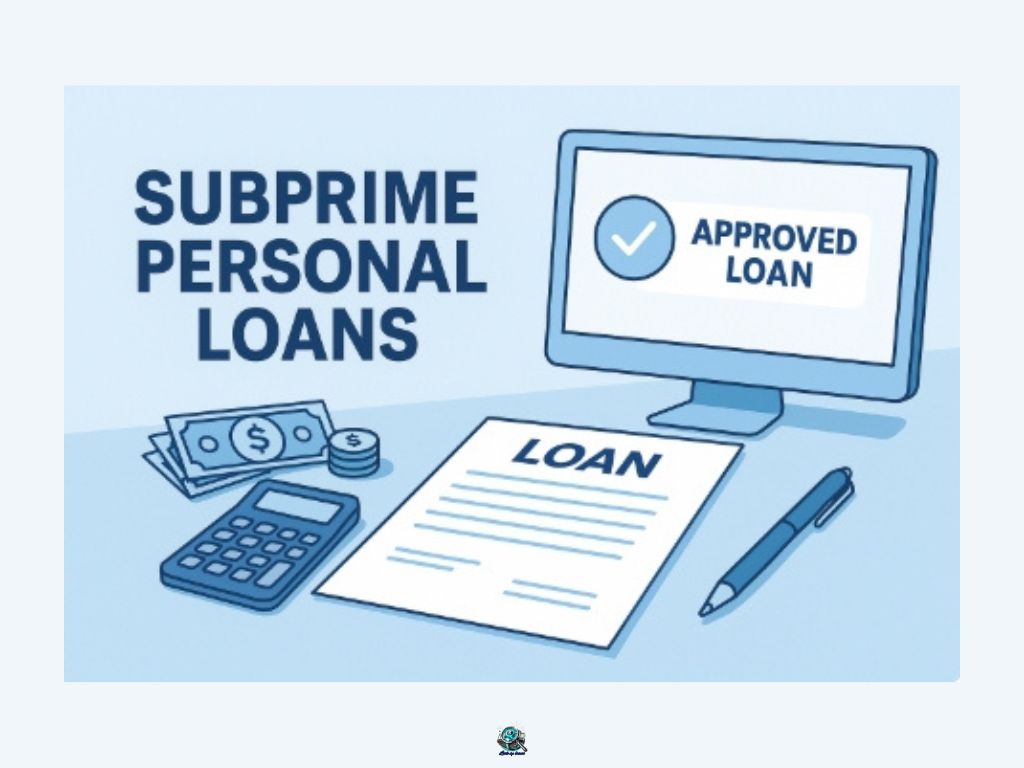
Alternatives to Subprime Personal Loans
Sometimes the best loan is the one you don’t take.
If a subprime personal loan feels too expensive or too risky here are a few alternatives worth considering:
- Credit Builder Loans: Offered by many credit unions and small banks, credit builder loans are designed specifically to help you build or rebuild credit. You don’t get the money upfront instead, you make monthly payments to your savings account, and get the money (plus a boosted credit score) at the end.
- Peer-to-Peer Lending Platforms: Sites like LendingClub and Prosper connect borrowers directly with individual investors. Sometimes, borrowers with fair or even bad credit can snag better rates than through traditional lenders.
- Personal Lines of Credit: Some credit unions offer flexible personal lines of credit based on your income and relationship history not just your credit score. You only pay interest on the money you use.
- Borrowing From Friends or Family (Carefully): If you have someone you trust and a clear repayment plan a private loan can save you from high-interest traps. Just be sure to treat it like a real business agreement to avoid damaging relationships.
Bottom line: Subprime personal loans are just one tool and sometimes, better options are hiding in plain sight.

💭 Subprime vs. Safer Alternatives
| Option | Collateral Needed? | APR Range | Approval Speed | Risk Level | Best For… |
|---|---|---|---|---|---|
| Subprime Personal Loan | Sometimes (secured or unsecured) | 20% – 36%+ | 1 – 3 days | High | Borrowers with credit below 620 |
| Credit Union Loan | No | 6% – 28% | 1 – 3 days | Low | Members with fair credit |
| Payday Alternative Loan (PAL) | No | Capped at 28% | 1 – 2 days | Low to Medium | Small emergency needs |
| Credit Builder Loan | No (funds held in savings) | 5% – 16% | 1 – 3 days | Low | Improving credit while saving |
| Borrowing from Family | No | 0% (if agreed) | Immediate | Medium (relationship risk) | People with a supportive network |
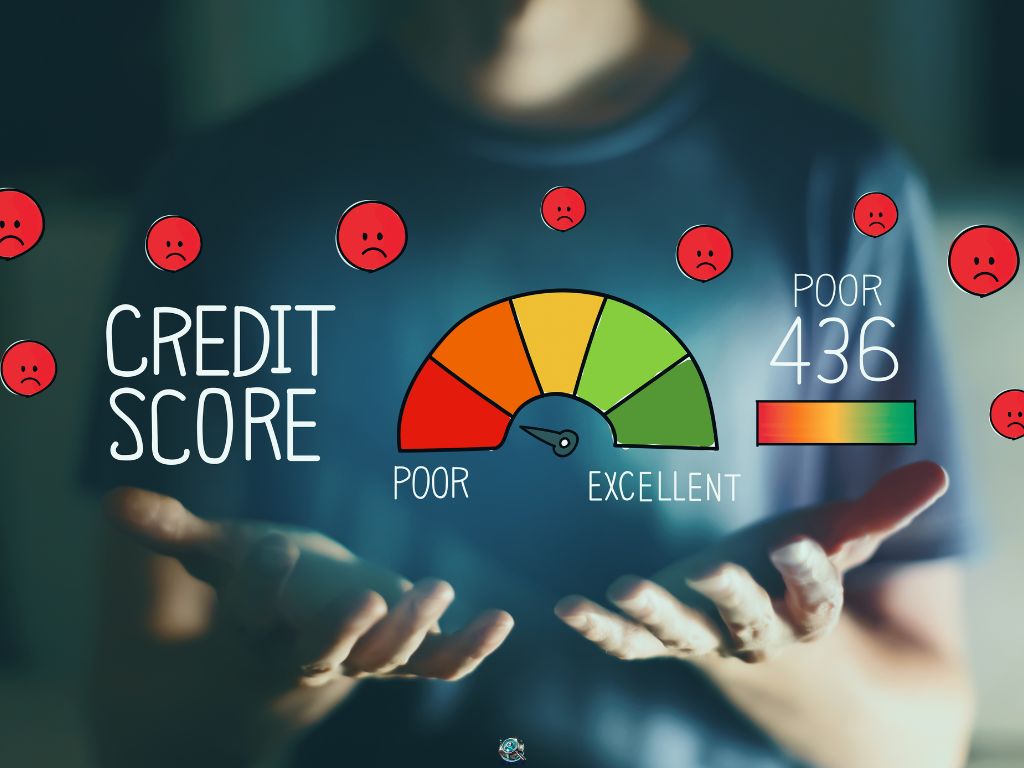
Conclusion
Subprime personal loans offer a second chance but they come at a cost.
High interest rates, strict terms, and real financial risks are part of the deal. The key is knowing how to navigate the system before you step into it.
Take the time to:
- Understand how subprime personal loans really work.
- Compare lenders and fight for the best terms.
- Borrow only what you need and nothing more.
- Explore safer alternatives if a loan feels too heavy.
Getting approved is important. Staying financially free is even more important.
Borrow smart. Protect your future.
Before applying, it’s smart to understand the full picture. Our Subprime Loans 101 Guide explains what lenders don’t always tell you.
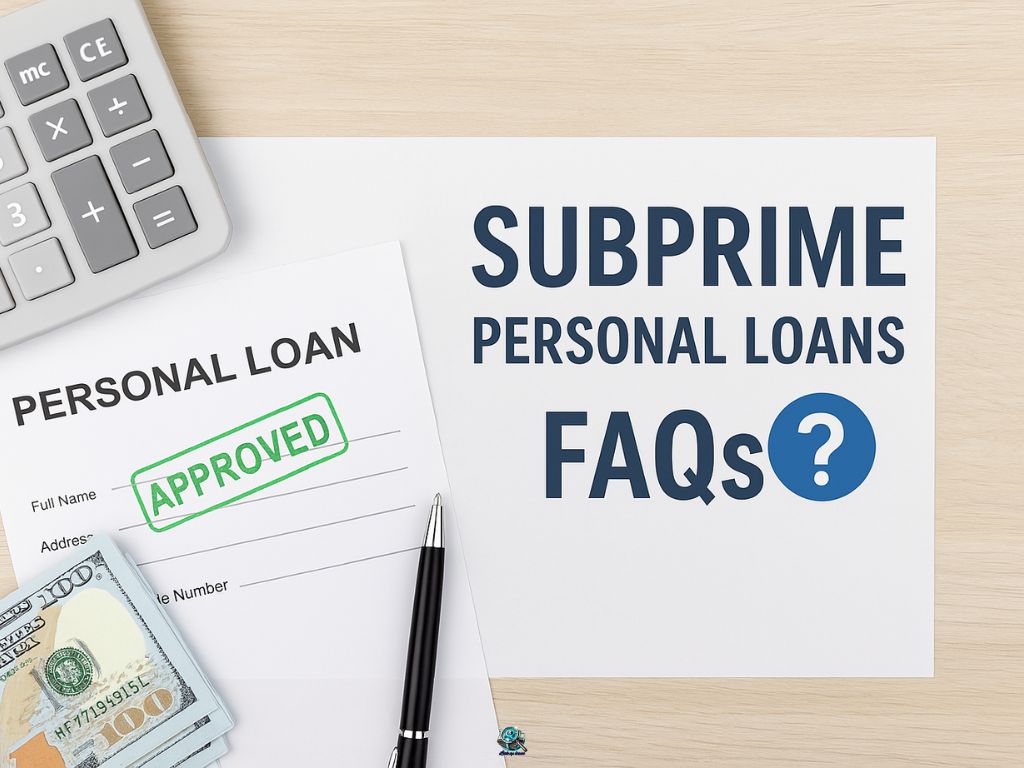
FAQs About Subprime Personal Loans (2025 Edition)
What exactly is a subprime personal loan?
A subprime personal loan is a fixed-term installment loan offered to borrowers with credit scores below 620 who may not qualify for traditional bank loans. These loans can be secured (backed by collateral) or unsecured, and they typically feature higher APRs, smaller loan amounts, and shorter repayment terms.
Who offers subprime personal loans?
Subprime personal loans are available through specialized lenders such as LendingPoint, OneMain Financial, Avant, and Upgrade, as well as select credit unions that work with fair- to poor-credit members. Many fintech lenders focus on this space, offering fast approvals but always verify they’re registered and regulated under state or federal lending laws.
What are typical loan amounts and terms?
Most subprime personal loans range from $1,000 to $10,000, with repayment terms between 12 and 36 months. Loan size depends on your verified income, debt-to-income ratio, and overall credit history.
What interest rates should I expect?
APRs typically fall between 20% and 36%, but they can climb higher for very low scores or short-term loans.
According to Experian’s 2025 Credit Report, the average subprime personal-loan APR is 27.8%, compared to 11.5% for prime borrowers.
Can a subprime personal loan help rebuild my credit?
Yes if you make on-time payments every month and avoid late fees. Subprime loans report to major credit bureaus, so positive payment history can gradually raise your score. Missed or late payments, however, can make your credit worse than before.
What fees should I watch for with personal loans?
Common subprime personal-loan fees include:
- Origination fees (1–10% of the loan)
- Late-payment penalties
- Prepayment penalties (less common but possible)
- Add-on insurance or service fees sometimes bundled into the loan amount
Legitimate lenders disclose all of these in writing; hidden fees are a red flag.
How fast can I get funded?
Online lenders can fund as quickly as 24–48 hours after approval, while credit unions or banks typically take 3–7 business days for verification and disbursement.
Can I refinance a subprime personal loan?
Yes, refinancing is one of the smartest ways to escape high interest. If your credit or income improves within 12–18 months, you may qualify for a prime or near-prime loan at a lower rate. Compare multiple offers before refinancing to make sure the savings outweigh any new fees.
What are the biggest risks with subprime personal loans?
- High interest costs: You might pay back double what you borrowed.
- Short repayment windows: Missed payments can cause immediate damage to your credit.
- Aggressive collections: Some lenders move quickly after a default.
- Debt cycle risk: Rolling over or refinancing repeatedly traps many borrowers in long-term debt.
Are all subprime personal lenders predatory?
No but caution is crucial. Reputable lenders clearly disclose APR, total repayment amount, and fees before you sign. Avoid anyone using terms like “guaranteed approval” or “no credit check.” Those are common signs of predatory lending.
What are safer alternatives to subprime personal loans?
- Credit-builder loans from credit unions or community banks
- Payday Alternative Loans (PALs) with capped interest rates
- Peer-to-peer platforms like LendingClub for mid-credit borrowers
- Secured personal loans using savings or CDs as collateral
Each offers more predictable costs and better long-term credit impact.
When does taking a subprime personal loan make sense?
A subprime personal loan can make sense if you:
- Have a steady income and can afford short-term payments
- Need to cover an urgent, one-time expense (e.g., medical bill or car repair)
- Have a plan to refinance or repay early once your credit improves
If you’re borrowing to cover recurring expenses or other debt, it’s a warning sign to pause and reassess.
2 Comments
Personal Loans: Read This Before You Sign Anything - Look Up Loans · June 21, 2025 at 3:11 am
[…] If your score puts you in the subprime range, this guide to subprime personal loans shows how to find safer options and avoid predatory terms. […]
Subprime Loans 101: Why They’re Riskier Than You Think - Look Up Loans · August 19, 2025 at 10:07 pm
[…] Check out our Subprime Personal Loans Guide. […]